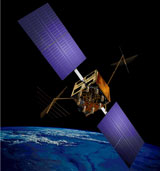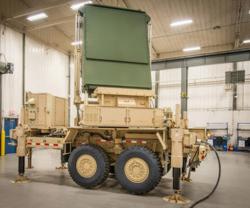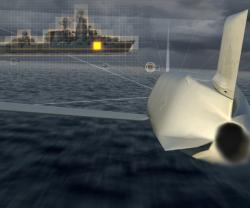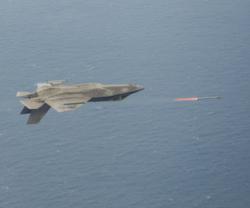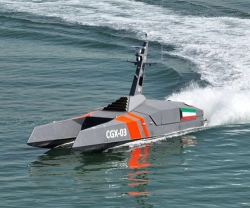Lockheed Progresses on GPS III Program
13.10.2011 Products
The Lockheed Martin team developing the U.S. Air Force's next generation Global Positioning System has turned on initial power to the program's pathfinder spacecraft, known as the GPS III Non Flight Satellite Testbed (GNST). The milestone gives the team high confidence in meeting the scheduled launch of the first GPS III satellite in 2014.
The GPS III program is the lowest risk solution to constellation sustainment and the most affordable path to meet the needs of military, commercial and civilian users worldwide. GPS III will improve position, navigation and timing services and provide advanced anti-jam capabilities yielding superior system security, accuracy and reliability.
With a focus on affordability, the GPS III team is first developing the GNST, a full-sized prototype of the GPS III spacecraft used to identify and solve issues prior to the first space vehicle. This approach significantly reduces risk, improves production predictability, increases mission assurance and lowers overall program costs. The GNST, populated with fully functional non-flight boxes, provides space vehicle design level validation; early verification of ground, support, and test equipment; and early confirmation and rehearsal of transportation operations.
"Turning initial power on for the GNST is a major milestone for the GPS III team demonstrating we are well on track to deliver the first satellite for launch in 2014," said Lt. Colonel Don Frew, the U.S. Air Force's GPS III Program Manager. "Our joint government and industry team is committed to delivering GPS III on schedule to sustain and modernize the GPS constellation for users worldwide."
The GPS III team has installed power subsystem components, harnesses, and tracking, telemetry and control hardware on the GNST structure to support phased checkout of the integrated design. Flight software versions have also been delivered for all of the spacecraft and payload computer processors. In parallel, GPS III teammate ITT is integrating the GNST Navigation Payload at their facility in Clifton, NJ.
Successfully powering on the GNST demonstrates initial mechanical integration, validates the GNST's interfaces and leads the way for electrical and integrated hardware-software testing. The GNST will be shipped to Lockheed Martin's GPS III Processing Facility in Denver late this year to demonstrate Assembly, Integration and Test procedures. It will then be delivered to Cape Canaveral Air Force Station in the summer for 2012 for pathfinding activities at the launch site.
Building on lessons learned from previous GPS space programs; the U.S. Air Force's GPS III acquisition approach is considered by many to be the model for future space acquisition.
The program has reinstated rigorous technical specifications and standards, and placed a strong emphasis on systems engineering with a robust mission assurance process. These actions provide the basis for verifying the quality of the technical work and ensuring issues are surfaced and corrected earlier in the program.
For GPS III, Lockheed Martin is building on its proven record of delivering highly reliable GPS spacecraft. The fleet of Lockheed Martin-built GPS IIR and IIR-M satellites makes up the majority of the operational GPS constellation. The satellites have exceeded 140 cumulative operational years on-orbit with a reliability record of better than 99.9 percent. Lockheed Martin heritage also dates back to the production of the Oscar and Nova satellites, the programs that paved the way to the current GPS system.
The GPS III program is the lowest risk solution to constellation sustainment and the most affordable path to meet the needs of military, commercial and civilian users worldwide. GPS III will improve position, navigation and timing services and provide advanced anti-jam capabilities yielding superior system security, accuracy and reliability.
With a focus on affordability, the GPS III team is first developing the GNST, a full-sized prototype of the GPS III spacecraft used to identify and solve issues prior to the first space vehicle. This approach significantly reduces risk, improves production predictability, increases mission assurance and lowers overall program costs. The GNST, populated with fully functional non-flight boxes, provides space vehicle design level validation; early verification of ground, support, and test equipment; and early confirmation and rehearsal of transportation operations.
"Turning initial power on for the GNST is a major milestone for the GPS III team demonstrating we are well on track to deliver the first satellite for launch in 2014," said Lt. Colonel Don Frew, the U.S. Air Force's GPS III Program Manager. "Our joint government and industry team is committed to delivering GPS III on schedule to sustain and modernize the GPS constellation for users worldwide."
The GPS III team has installed power subsystem components, harnesses, and tracking, telemetry and control hardware on the GNST structure to support phased checkout of the integrated design. Flight software versions have also been delivered for all of the spacecraft and payload computer processors. In parallel, GPS III teammate ITT is integrating the GNST Navigation Payload at their facility in Clifton, NJ.
Successfully powering on the GNST demonstrates initial mechanical integration, validates the GNST's interfaces and leads the way for electrical and integrated hardware-software testing. The GNST will be shipped to Lockheed Martin's GPS III Processing Facility in Denver late this year to demonstrate Assembly, Integration and Test procedures. It will then be delivered to Cape Canaveral Air Force Station in the summer for 2012 for pathfinding activities at the launch site.
Building on lessons learned from previous GPS space programs; the U.S. Air Force's GPS III acquisition approach is considered by many to be the model for future space acquisition.
The program has reinstated rigorous technical specifications and standards, and placed a strong emphasis on systems engineering with a robust mission assurance process. These actions provide the basis for verifying the quality of the technical work and ensuring issues are surfaced and corrected earlier in the program.
For GPS III, Lockheed Martin is building on its proven record of delivering highly reliable GPS spacecraft. The fleet of Lockheed Martin-built GPS IIR and IIR-M satellites makes up the majority of the operational GPS constellation. The satellites have exceeded 140 cumulative operational years on-orbit with a reliability record of better than 99.9 percent. Lockheed Martin heritage also dates back to the production of the Oscar and Nova satellites, the programs that paved the way to the current GPS system.
Previous PostVectronix New Precision Target Location Systems
Latest news
Latest events
DefenPol China2025 - 7th Guangzhou International Defense & Police Exhibition & Summit
11 - 12 Jul 2025Nan Fung International Convention & Exhibition Center (NICEC) - ChinaIDEF 2025 Turkey - International Defence Industry Fair
22 - 27 Jul 2025Istanbul Expo Center - TurkeyDSEI 2025
09 - 12 Sep 2025Excel, London - United KingdomIntersec Saudi Arabia
29 Sep - 01 Oct 2025Riyadh International Exhibition & Convention Centre - Saudi Arabia

